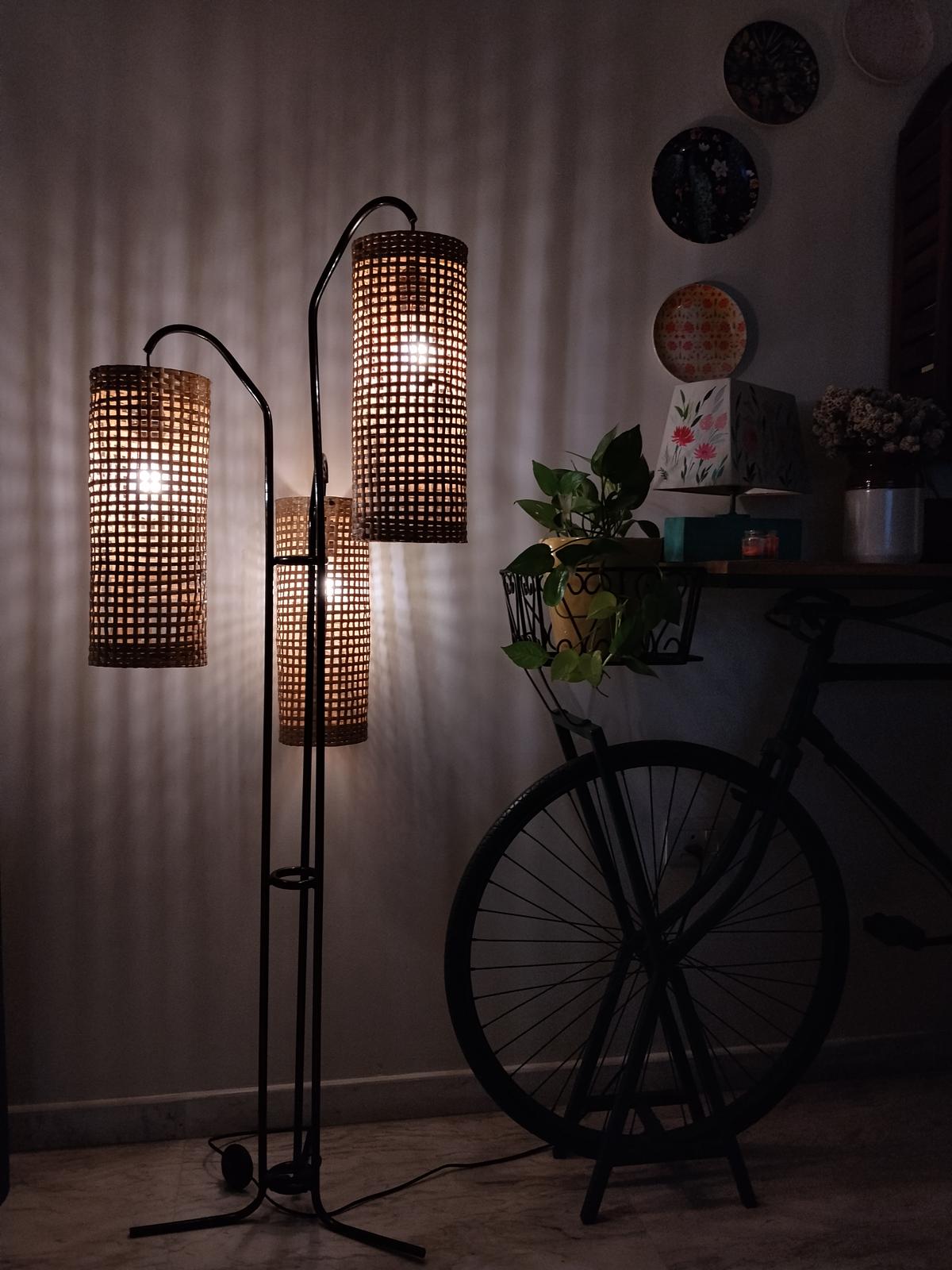970x125
To stand out as the best pick in its segment, a budget smartphone must deliver on three essentials: performance, battery, and camera. On paper, the new Poco M7 Plus checks all three with authority: the largest battery in the category at 7,000 mAh, a 6.9-inch display with a 144 Hz refresh rate, and a 50 MP AI rear camera. While I personally find phones of this size a bit unwieldy, many users may see the extra screen real estate as a big advantage – hence the name Plus. However, the real question is: does the M7 Plus live up to the strong reputation of the M-series, or does it fall short? Let’s find out:
970x125
Design
At first glance, the Poco M7 Plus looks familiar yet sharper than its predecessor. The carbon black version instantly gives off a premium vibe, helped by the matte grid finish that catches light in subtle ways. But the size is unmistakable, this is a large phone, bordering on tablet territory at 6.9 inches. In hand, the weight and thickness are noticeable, and while some may appreciate the assurance of a solid build, others will find it a little clunky. The phone features a polycarbonate body, and the finish keeps fingerprints away, but the premium feel is slightly reduced.
On the practical side, the ports and buttons are standard. You get the USB-C port at the bottom, SIM tray on the side, and volume/power buttons that feel tactile and well placed. The phone sticks to a single mono speaker with a 200% boost mode, which gets loud but doesn’t match the stereo setups of rivals like the iQOO Z10x. The absence of a headphone jack also feels like a missed opportunity in this segment.
Up front, the slim bezels are welcome. The large screen dominates the front, giving it a near all-display look. The punch-hole selfie camera is centered neatly. The phone carries an IP64 rating — an improvement over the M6’s IP53 — offering better dust and splash resistance. That makes it more reliable in everyday use. It’s not the sleekest in the budget range, especially when you compare it with the curvier Moto G85 or the edgy CMF Phone 1, but it does project sturdiness and practicality.
(For top technology news of the day, subscribe to our tech newsletter Today’s Cache)
Display
The M7 Plus offers a 6.9-inch FHD+ LCD panel with a 144 Hz refresh rate — the highest in this segment. Scrolling feels smoother, animations flow better, and gaming gets an extra polish. For everyday users, the big advantage is binge-watching. Videos feel immersive, almost tablet-like, making the phone live up to Poco’s “pocket theatre” pitch.
Brightness levels are decent but not segment-leading. Competitors like the iQOO Z10x and Moto G85 offer better outdoor readability with higher peak brightness. That said, colours are vibrant, contrast levels are good for an LCD, and the viewing experience indoors is excellent. It’s not OLED territory, which is what you’d get in the Moto G85, but for the price, the M7 Plus delivers a solid display experience that puts the older M6 firmly in the past.
OS and AI
Running on Xiaomi’s HyperOS, the Poco M7 Plus feels more refined than the MIUI-driven M6. HyperOS brings a lighter, cleaner interface with less bloatware and smoother navigation. It’s a big upgrade in daily usability, making multitasking less cluttered.
AI features also play a role in making the device stand out. Tools like Circle to Search, AI Eraser, and AI Sky Editing are present here, giving the budget buyer a taste of premium features. Compared to the Poco M6, which lacked most of these AI tricks, this feels like a meaningful leap. For students and young professionals who love tinkering with photos and social media content, these additions give the M7 Plus a creative edge over its peers.
Performance
The latest Poco M7 Plus packs the Snapdragon 6s Gen 3 chipset paired with 8 GB RAM and 128 GB storage in the review unit. Compared to the Helio G99 Ultra in the POCO M6, this is a clear jump in performance and efficiency. Everyday tasks like messaging, browsing, video streaming run effortlessly, and the phone rarely hiccups.
Benchmark numbers confirm the upgrade. The M7 Plus scored 942 in single-core and 2230 in multi-core Geekbench tests, with a GPU score of 1611. These numbers put it ahead of the Moto G85 and CMF Phone 1, both of which rely on slightly older chipsets.
Gaming is smooth too. Titles like BGMI and Call of Duty run at high settings without major frame drops. The large display makes the experience immersive, though the mono speaker does limit the audio punch. Heat management is decent, with no noticeable throttling during 30 minutes of gameplay. While the M7 Plus is not pitched as a gaming-first phone, that crown still sits with iQOO in this price bracket, it holds its own for casual and mid-level gamers.
Overall, performance is where the M7 Plus feels dependable, if not the outright leader. It may not dethrone the iQOO Z10x in benchmarks, but it strikes a more balanced package when you factor in display and battery.
Camera
Budget phones often stumble on cameras, but the Poco M7 Plus delivers an experience better than expected for its price. The main 50 MP AI rear camera produces shots with good colour balance and sharpness in daylight. Details are crisp, and the contrast feels more natural. Further, the M7 Plus benefits from improved AI tuning.
Poco M7 Plus camera sample
| Photo Credit:
Haider Ali Khan
Portrait shots are handled well, with decent edge detection. The software sometimes over-smooths skin tones, but the overall output is pleasing. Night shots are decent, though noise creeps in. The Moto G85, with OIS support, handles low light better, but the M7 Plus isn’t far behind for casual snaps.

Poco M7 Plus camera sample
| Photo Credit:
Haider Ali Khan
Where the M7 Plus really shines is in selfies. The front camera captures skin tones fairly accurately, with enough detail for social media use. HDR performance is decent, preventing blowouts in tricky lighting.

Poco M7 Plus camera sample
| Photo Credit:
Haider Ali Khan
That said, there are some rough edges. Occasionally, the camera app froze, and once the screen abruptly shut while clicking pictures, clearly a software glitch that Poco will need to patch. Still, when it works, the results are strong for the sub-₹15K segment.
For me, the camera stood out as the most surprising strength of this device. It doesn’t boast fancy multi-lens setups, but it nails the basics.
Battery
Poco M7 Plus makes its boldest statement here. The 7,000 mAh cell is the largest in its segment, dwarfing the 5,000–6,000 mAh batteries of most competitors. In real use, it easily lasts two full days with moderate use and can stretch further for light users. For heavy streamers or gamers, it guarantees a full day without battery anxiety.
Charging is supported at 33W, which isn’t the fastest but is reasonable for a battery this large. A full top-up takes about 2 hours. The added ability to reverse charge other devices at 18W is a neat bonus, essentially turning the phone into a power bank on the go. This gives the M7 Plus a practical edge over the iQOO Z10x and Moto G85, neither of which can boast such utility.
Verdict
At ₹14,999, the Poco M7 Plus positions itself as the phone to beat in the budget category. Its massive battery, large smooth display, and dependable performance make it a strong choice. The design, while sturdy, feels a bit oversized, and the mono speaker is a compromise. Camera glitches also need ironing out.
In terms of competition, the iQOO Z10x still leads in raw performance, the Moto G85 offers a sleeker OLED display with better camera stability, and the CMF Phone 1 wins on design quirkiness. Yet, the M7 Plus strikes the most balanced equation. It may not top every chart, but it delivers strongly where it matters most: entertainment and endurance.
970x125

